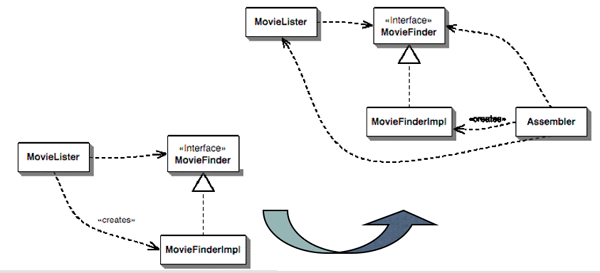The services are not responsible for the instantiation of the components on which they depend.
This architecture provides a loosely coupled design where the implementation of dependant services can be transparently exchanged.
This pattern has several names:
Hollywood principle: "don't call me, I will call you"
Inversion of Control
Dependency injection
Don't let the object create itself the instances of the object that it references. This job is delegated to the container (assembler in the picture).

There are two ways to inject a dependency:
Using a constructor:
public ServiceA(ServiceB serviceB)
Using setter methods:
public void setServiceB(ServiceB serviceB)
When a client service can not be stored in the container then the service locator pattern is used:
public ServiceA(){
this.serviceB =Container.getSInstance().getService(ServiceB.class);
}